Thomas A. Freese's Blog, page 13
October 17, 2013
The Double Whammy: Closing Skeptical Prospects Before Year-end
It’s tough enough that prospective buyers have become more skeptical toward vendors over the last few years. Now layer onto that the salesperson’s need to achieve quota before the ball drops in Times Square on New Year’s Eve, and you have a classic double whammy that could impact the salesperson’s ability to close sales prior to calendar year-end.
So, what is a sales professional supposed to do? You still have two and a half months to “git-er-done.” Though would suggest that how you choose to interact with these customers in the next few weeks may be more important than any of the eleventh-hour closing tactics that traditional approaches sometimes advocate.
What if there were a better way – something other than being left with the last ditch effort of trying to win the business by dropping the price? The key to wrapping up a business transaction within a reasonable timeframe has more to do with the simple concept of perceived value. 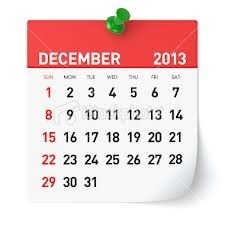
Some salespeople are surprised when Question Based Selling suggests that your product or service has no actual value. Don’t be offended. There is no such thing as actual value. A product or service is only valuable (to customers) to the extent that they perceive it to be. For example, when one of your prospects finds your offering to be extremely valuable, your chances of making a sale within your targeted timeframe goes way up. Of course, if they perceive little or no value, then your probability of success will surely diminish.
This realization that skeptical customers tend to hold salespeople off at arm’s length changes the equation with respect to closing sales. It’s no longer enough to host a sales call, give a demo, provide references, and then ask for the order. That’s what your competitors are doing. Granted, you can still win a sale using traditional methods. But for me, I would much rather use an approach that gives me an unfair advantage.
Here it is in a nutshell. Perceived value is directly related to the customer’s perceived need for your offering. If, for whatever reason, the customer has a distinct and immediate need for your product or service, then they will feel some sense of urgency to move forward with a purchase transaction. If, however, their need is moderate or passive, then timeframes tend to slip as deals are pushed to the side burner. It’s also true that as the customer’s need becomes more pressing, the issue of budget suddenly becomes less of an obstacle.
I’m not suggesting that you can close every sale you get involved with, because that’s unlikely. Frankly, if you close every deal, then your price is either too low or you’re not calling enough customers. Me, I just want to win more than my fair share. You do this by having an unfair advantage somewhere in the sales process.
In Question Based Selling, our advantage comes from depth of conversation. It’s likely that the customer has business issues that your product or service addresses. Identifying those issues is just the tip of the iceberg, however. What you really want to understand is “why” a particular issue is important to your customers. People have different goals, priorities, and agendas for making purchase decisions. That said, it’s pretty easy to identify the key decision factors for almost any business—whether it has something to do with productivity, security, cost effectiveness, operational efficiency, compliance, etc. Just knowing the key issues puts you on par with your competitors, however.
The real question that needs to be understood is “why” an issue like productivity might be important to this particular client? You must be careful how you ask, however, because rhetorical sales questions can erode one’s credibility very quickly. To alleviate this risk, you can simply say, “Mr. Customer, besides the obvious goal of increasing your company’s productivity, what specifically are you trying to accomplish with this type of solution?” Bingo!
Customers will cite specific implications that relate to productivity, like increased ROI or quicker time to market. But what are the chances customers will name 9 or 10 implications in response to your one question? The answer is it’s not likely. You have to believe that there must be 10+ reasons why productivity might be important to a customer. But most customers will only mention one or two, and sometimes three. Who’s going to bring up the other implications of productivity—things like profitability, marketshare, gaining a competitive advantage, or decreasing the cost of goods sold?
If not you, you leave the door wide open for someone other than yourself to be seen as a more valuable resource. You also risk customers maintaining the status quo because they don’t have a sense of urgency to move forward with a purchase decision. So, over the next few days or weeks, you might want to focus on expanding the customer’s needs, in order to increase the perceived value of your product or service and also their sense of urgency for making a decision.
August 16, 2013
The “New” Question Based Selling
Since I published my first book (Secrets of Question Based Selling) some thirteen years ago, the business environment has changed—in some ways dramatically, while other changes are very subtle. Therein lies the difference between my original version and the “new” Question Based Selling.
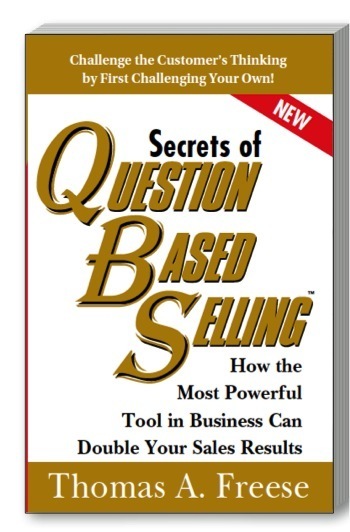 Now that I have trained hundreds of sales teams and thousands of salespeople over the last fifteen years, I’ve discovered that the QBS Methodology has evolved significantly from my first work. Not surprisingly, many of the foundations still apply, like the need to establish credibility, pique the prospect’s interest, and minimize your risk of failure—all of which are indeed timeless. But, my intention with this updated version of the book was to enhance those concepts by including many of the metaphors, anecdotes, and syllogisms that have made Question Based Selling the top-rated sales course that our clients have ever experienced.
Now that I have trained hundreds of sales teams and thousands of salespeople over the last fifteen years, I’ve discovered that the QBS Methodology has evolved significantly from my first work. Not surprisingly, many of the foundations still apply, like the need to establish credibility, pique the prospect’s interest, and minimize your risk of failure—all of which are indeed timeless. But, my intention with this updated version of the book was to enhance those concepts by including many of the metaphors, anecdotes, and syllogisms that have made Question Based Selling the top-rated sales course that our clients have ever experienced.
The first fifty pages of the book contain brand new material, which although we have been teaching for quite a while, I am now proud to share in the book. Chapter 1, called “Selling Intangibles” focuses on the fact that value is in the eye of the beholder and it’s possible for sellers to enhance or diminish that value by how they position themselves relative to the competition. Chapter builds on this theme, called “Expanding Your Value Proposition,” where we explore ways to create more perceived value in the customer’s mind. I am confident that new readers and existing supporters of the QBS Methodology with find the book both informative and enlightening.
My appreciation goes out to my publisher, as the good people at Sourcebooks were integral in taking a book that has outsold itself each year for 13+ years now, and improve upon it. This was a significant undertaking and I appreciate their diligence and guidance every step of the way.
Note that the book is scheduled to be available in November 2013, just in time for everyone’s last minute Christmas shopping. But I fully expect the “new” Question Based Selling to be around for quite some time and I look forward to people reading the book as well as working directly with sales teams all over the world.
August 6, 2013
Gaining a Competitive Advantage in August
Believe it or not, the dog days of summer actually present a golden opportunity for salespeople who want to either penetrate new accounts or get deeper, wider, and more strategic within their existing accounts.
Were you aware that in the summer, the average number of sales calls customers receive tends to decline significantly (up to 37% according to a recent survey)? This phenomenon happens because decision makers and project teams often take vacation during the months of July and August, while their children are out of school. This, in turn, translates into fewer follow up calls hounding your customers, and less initial sales calls, as sellers lessen their efforts by simply assuming they have a lower chance of success. And, the fact that less business tends to get transacted during the summer doldrums is something that perhaps you can use that to your advantage. 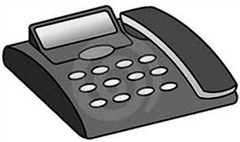
Learning how to selling effectively during the entire twelve month period is one of the secrets of over-achieving your sales goals year after year. While it is true that purchase decisions sometimes get pushed off during the summer months because of vacations, business rarely grinds to a complete halt. An opportunistic salesperson knows that not everyone goes on vacation, and they certainly don’t all leave at the same time. That realization creates windows of opportunity for the more creative salespeople to further solidify relationships, build momentum, and position their products to be the top choice when business resumes.
Essentially, you have less competition for the customer’s time and attention between now and Labor Day. Granted, you still have to call with a purposeful, relevant, and mutually valuable reason, but it’s definitely easier to get mindshare when there are fewer people knocking on the door. Of course, the week after Labor Day will see an explosion in the number of sales calls, as sellers all bounce back from their respective vacations and assume customers are ready to do business. Getting through during that busy period can be very difficult(if not mind-numbing), for both the salesperson and the customer.
I believe in getting ahead of the curve anyway. For example, by the time the actual request for proposal is distributed to the public, unless something out of the ordinary happens, the vendor who helped the customer craft the criteria for the decision is already in a unique position to win the business. So why wait?We are at the beginning of August and there are companies who are going to make strategic decisions in the next 60 to 90 days. If you are the one who picks up the telephone and initiates contact, then you could find yourself with a distinct advantage come decision time. And if the key decision maker happens to be on vacation, then make a note to follow up with them next week.
Me, I’ve always tried to avoid battling the masses. During the holidays, I tend to do my shopping during off-hours. And you will never see me lined up at the front door of a Walmart on Black Friday—the day after Thanksgiving. Likewise, I find the ski slopes are nearly empty in the mid- to late afternoon, and the beach clears out by 6:30pm. That’s why I always regarded August as a great selling month. Many of your competitors are essentially asleep at the wheel, and it’s a great time to plant seeds that will take root and be ready to harvest at just the right time in the fall. Especially if you haven’t ever tried it, put the pedal to the floor this month and see if it doesn’t bring you the desired return on your invested sales effort.
July 15, 2013
2013 QBS Boot Camp: Oct 3-4th
 “There has never been a better time for sellers to do everything possible to make themselves invaluable to their customers, colleagues, and their company.” -T. Freese
“There has never been a better time for sellers to do everything possible to make themselves invaluable to their customers, colleagues, and their company.” -T. Freese
We’re very happy to announce our October 2013 QBS Summit! If you would like to renew your focus on increasing your own sales effectiveness, or give your entire sales team an unfair advantage over the competition, join us on October 3 - 4 for the October QBS Boot Camp.
The event, featuring QBS Research founder Tom Freese in Atlanta and will be held on Thursday, October 3rd and Friday, October 4th.
The learning environment will be highly interactive, with participants from a variety of industries including technology, financial services, healthcare, consulting, insurance, real estate, manufacturing, advertising, hospitality, and retail, and feedback from previous QBS Summit events has been “off the charts.”
With limited seating, reserve your seats early since we are expecting a full house. You might also want to bring extra pencils and a stack of writing pads for note taking.
“Tom! I wanted to thank you for an amazing training two weeks ago-my head is still spinning from all of the great info. I met with our Regional Manager yesterday and he wants you to train the rest of our team. You will be hearing from us very soon…” -Liz B., Michigan…your newest QBS groupie!
July 13, 2013
Next Open-Enrollment Class: January 9th - 10th
Mark your calendars with regard to the next open-enrollment class which will take place in Atlanta on Thursday and Friday, January 9th and 10th. These sessions tend to fill up quickly and will be officially announced in the mid-August QBS newsletter, so you’ll want to be sure and save the date.
Who should attend? We usually have a range of people from QBS alumni, people who have attended a class previously who want to brush up on their QBS skills. Also in attendance will be people who have never attended a class or read any of the books. And let’s not leave out marketers and people in other sales support positions.
The class itself will run all day on Thursday and then through 1:00pmEST on Friday, giving those who travel a chance to get home at a reasonable hour.
Next Open-Enrollment Class: October 3rd - 4th
Mark your calendars with regard to the next open-enrollment class which will take place in Atlanta on Thursday and Friday, October 3rd and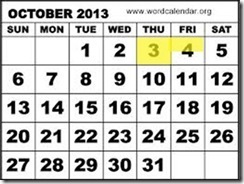 4th. These sessions tend to fill up quickly and will be officially announced in the mid-August QBS newsletter, so you’ll want to be sure and save the date.
4th. These sessions tend to fill up quickly and will be officially announced in the mid-August QBS newsletter, so you’ll want to be sure and save the date.
Who should attend? We usually have a range of people from QBS alumni, people who have attended a class previously who want to brush up on their QBS skills. Also in attendance will be people who have never attended a class or read any of the books. And let’s not leave out marketers and people in other sales support positions.
The class itself will run all day on Thursday and then through 1:00pmEST on Friday, giving those who travel a chance to get home at a reasonable hour.
Sellers Have a Lot in Common with…
Believe it or not, today’s salesperson has a lot in common with the sport fisherman. This notion occurred to me as I went on a one-day jaunt up to North Georgia to fish for trophy trout this past spring. The fog gently lifted off the river as the crystal clear waters reflected the blue sky above. The water teemed with Rainbow trout. And, because we were fishing on private land, it was catch and release when we went, the idea being to allow the fish to grow to their full adult length of 24 to 26 inches and up to four and five pounds.
Being relative novices at the art of fly fishing, my friend Mark and I hired a guide (Andy) who not only knew the river like the back of his hand, he also knew how to choose the appropriate fly (or bait) for the given fishing conditions.
Chapter 4 in my first book, Secrets of Question Based Selling, opens with a simple anecdote that goes like this: “I go fishing up in Maine every summer,” Dale Carnegie wrote in the mid 1930s. “Personally, I am very fond of strawberries and cream, but I find that for some strange reason, fish prefer worms. So when I go fishing, I don’t think about what I want. I think about what they want. I don’t bait the hook with strawberries and cream. I dangle a worm or a fly in front of the fish and think, ‘Wouldn’t you like to have that?’” Carnegie’s story prompts me to ask, why not use the same common sense when fishing for customers? Shouldn’t we think about what they want?
The other direct comparison between fishing and selling is how you don’t actually try to hook a fish. In order to actually catch one, you have to first cause the fish to see the desirable looking baited hook and then come over and take a nice big juicy bite. That’s how you catch fish-by somehow enticing them to become interested enough to bite at your lures rather than just chasing them around and randomly trying to hook one.
Sales works much the same way. If you leave a voice-mail message, for example, that says something to the effect of, “I want to take a few minutes of your time to see if there is a fit between what we offer and what your might need.” Click! Very few customers would take that bait. It’s not that you don’t want to spend time with customers exploring their needs relative to your solutions. You just haven’t made it very enticing from the customer’s perspective.
You’d be much better reeling them in slowly by leaving a message that said, “I had a conference call with the Director of Operations last week, and three issues came up in the meeting that might directly impact your production. One of them is time sensitive, so could you give be a call back at…?” If you are calling with something that sounds relevant, most prospects will be hooked. They will want to know more about those issues that came up in the meeting, especially the one that was time sensitive. Bingo! That’s a direct strike on your line, which will help fill the boat with opportunities.
June 4, 2013
2013 QBS Summer Session: June 27-28
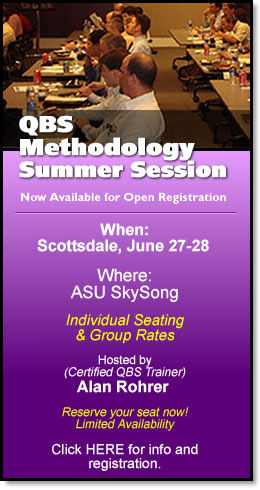 “There has never been a better time for sellers to do everything possible to make themselves invaluable to their customers, colleagues, and their company.” -T. Freese
“There has never been a better time for sellers to do everything possible to make themselves invaluable to their customers, colleagues, and their company.” -T. Freese
We’re very happy to announce our next QBS Summer Session! If you would like to renew your focus on increasing your own sales effectiveness, or give your entire sales team an unfair advantage over the competition, join us on June 27 - 28 for the 2013 QBS Summer Session.
The event, featuring QBS Research certified trainer Alan Rohrer in Scottsdale and will be held on Thursday, June 27th and Friday, June 28th.
The learning environment will be highly interactive, with participants from a variety of industries including technology, financial services, healthcare, consulting, insurance, real estate, manufacturing, advertising, hospitality, and retail, and feedback from previous QBS Summit events has been “off the charts.”
With limited seating, reserve your seats early since we are expecting a full house. You might also want to bring extra pencils and a stack of writing pads for note taking.
Click for Early Enrollment Discount & SUMMER SESSION DETAILS.
June 3, 2013
What Happens When a Sales Call Goes Really Well?
Have you ever noticed that when a sales call or client meeting goes really well, the customer almost always thanks the salesperson for their help? It’s a great feeling to be appreciated for the value you bring to the table—not just with your solutions, but also because of your vision, creativity, and foresight in coming up with the best solution.
But when was the last time you got thanked for making a cold call? I’m guessing never. By definition cold calls are naturally cold. You’re calling a stranger, pitching a product or service they may not even want or need. In addition, your call may be interrupting something else more important to the customer, and yours is probably not the only cold call that came in during the last 30 minutes. That’s no way to create a receptive audience, is it?
Penetrating new accounts is part of the job for most salespeople. For some sellers, like those on an inside sales team, breaking into new accounts is not only their primary role, it’s their job description. Even when assigned to existing accounts, sellers are always trying to get deeper, wider, and more strategic within those accounts…and that usually requires the seller to pick up the phone and make introductory calls (i.e. cold calls.) [image error]
There are several schools of thought on cold calling. Some training programs build mathematical formulas where they figure out how many dials should be made based on typical rejection rates, to come up with the right number of qualified leads. Basically, you bang the phones until you find someone who wants to talk with you. Other philosophies use sales gimmicks or clever one-liners to try to gain entry with new prospects. Of course, taking the coy approach where you sneak in before the client knows what’s happening produces plenty of pitfalls and has a wide disparity of success, or lack thereof.
In Question Based Selling, I actually encourage salespeople not to make any more cold calls. Now, hang on. I didn’t say you shouldn’t attempt to contact new prospects or make fewer calls than usual. I simply recommend that you don’t make any more cold calls. What’s the biggest problem with a cold call? Temperature—they’re cold! As a result, cold callers tend to sound purposeless, valueless, not relevant, and not credible. Each of those is a quick ticket off the phone in any sales culture.
Instead of making cold calls, warm up your call with a few simple QBS strategies. First, you need to sound like you’re calling for a reason, particularly early in the call. Why would you want to call for no reason? And why would a customer want to listen to a call without purpose. You’ve got to know that’s the first thing a customer wants to know—who are you and why are you calling me? So, being purposeful early in the call is a requirement in today’s competitive environment. The question is how exactly can you be more purposeful in your calls?
The simple answer to sounding purposeful is to be more specific. Specificity is your friend when making those all-important initial sales calls. For example, here’s a sample voice-mail message a healthcare sales rep might leave:
Salesperson: “Hi, Mr. Prospect, this is Joe Smith from XYZ Company, I’m on the team that work with healthcare accounts in the tri-state area. We’ve had 13 new announcements in the last three and a half months, two that I think might directly impact your current operations, one of which is time sensitive…so I wanted to be proactive and try to catch you in the office. If you get a chance today, could you please call me back? I should be here until around 4:30 this afternoon. My direct number is (770) 840-7640. I appreciate your help.
This particular technique is called ‘subsetting.’ The rep has taken a larger number of events or announcements and vetted them down into a reasonable sized to-do list that is far less threatening for the customer. Right off the bat, the customer will appreciate that you are trying to make the best use of their time. And that appreciation brings you one step closer to engaging the customer.
If you are purposeful enough, often enough, customers might just start appreciating your calls instead of dodging them. That’s the difference in old-fashioned cold calling and the QBS approach. Wouldn’t that be something, having customers actually thank you for taking the time to call them with information or products that are purposeful, relevant, credible, and valuable? What’s the alternative? Cold calls no longer work on me (as a consumer) and I bet they don’t work on you either.
May 7, 2013
April Shower Bring May Flowers
For many clients, May is the month when it’s time to pull up the bootstraps and really get down to business. Especially for those whose fiscal year coincides with the calendar year, the first quarter lull is now a distant memory; and believe it or not, there are only eight more productive months in which to climb the proverbial mountain and achieve your annual sales goals. Eight months can seem like a lot until you factor in the need to fill the pipeline with prospects, create a sense of urgency for them to want to move forward, and consider the length of the typical sales cycle.
In addition to May being a transitional sales month, it is also my favorite time of year simply because of the change of scenery.The springtime birds are chirping, squirrels have come out in full force and the surrounding foliage is coming into full bloom. This year in particular, April’s moist weather has created a floral masterpiece in every direction.I guess the old saying is true that, “April showers bring May flowers.”
Ironically, the sales forecast tends to follow a similar pattern, where the amount of effort you invest this month can yield an abundance of success down the road.Yet, the economy still seems to be teetering on neutral and many clients I’ve talked with in the past few weeks continue to experience anemic sales forecasts. Opportunities for some strange reason seem to be drying up rather than blossoming. This raises the question, is there anything you do to ‘make it rain’ in a way that will kick start the growth of these opportunities?
The answer is a resounding yes. But I’m afraid it’s not as simple as just making more sales calls. To truly increase production, sellers have to focus on the quality of the calls being made and their relative effectiveness as compared to everyone else who is also vying for a share of the prospect’s time and attention.
Let me plant a seed with you in this regard. Is it possible that the effectiveness of your current elevator pitch has been eroded due to an increasing number of competitive influences, all basically communicating similar messages? What about your voice-mail and email messages? Are they being deleted before the information is even being conveyed?
It’s all about ROI for the customer and ROISE (Return on Invested Sales Effort) for the salesperson. There is a lot of truth to the notion that sales is a numbers game, but one of the key factors that needs to be tracked isn’t going to conveniently show up on a report from salesforce.com. That’s because sales effectiveness has more to do with the quality of the calls being made than simply measuring quantity.
Just as one’s sales efforts in April can bring new and exciting opportunities to the forefront in the month of May, those opportunities must also be nurtured and developed to ultimately bear fruit. Meanwhile, with just under eight months remaining in the calendar year, it’s worth considering how far some of your well-targeted prospecting efforts in the month of May would go toward developing your pipeline in June, July, and so on.
That leaves the sales team with two choices. One is to continue pounding away at your respective territory in the hopes that sheer persistence will pay off. The other option would be to take a step back and re-engineer your approach to increase your sales effectiveness and ultimately raise your return on invested sales effort. Remember that success in sales is almost always based on cause and effect, or to use my analogy where ‘April showers do bring May flowers.’ Increasing your sales effectiveness is a function of “how” you initially approach your territory and “how” you choose to manage your sales opportunities moving forward. Call us today to find out how Question Based Selling can help you boost your entire sales team’s performance in the coming months so that achieving your year-end goals become a foregone conclusion.
Thomas A. Freese's Blog
- Thomas A. Freese's profile
- 2 followers



